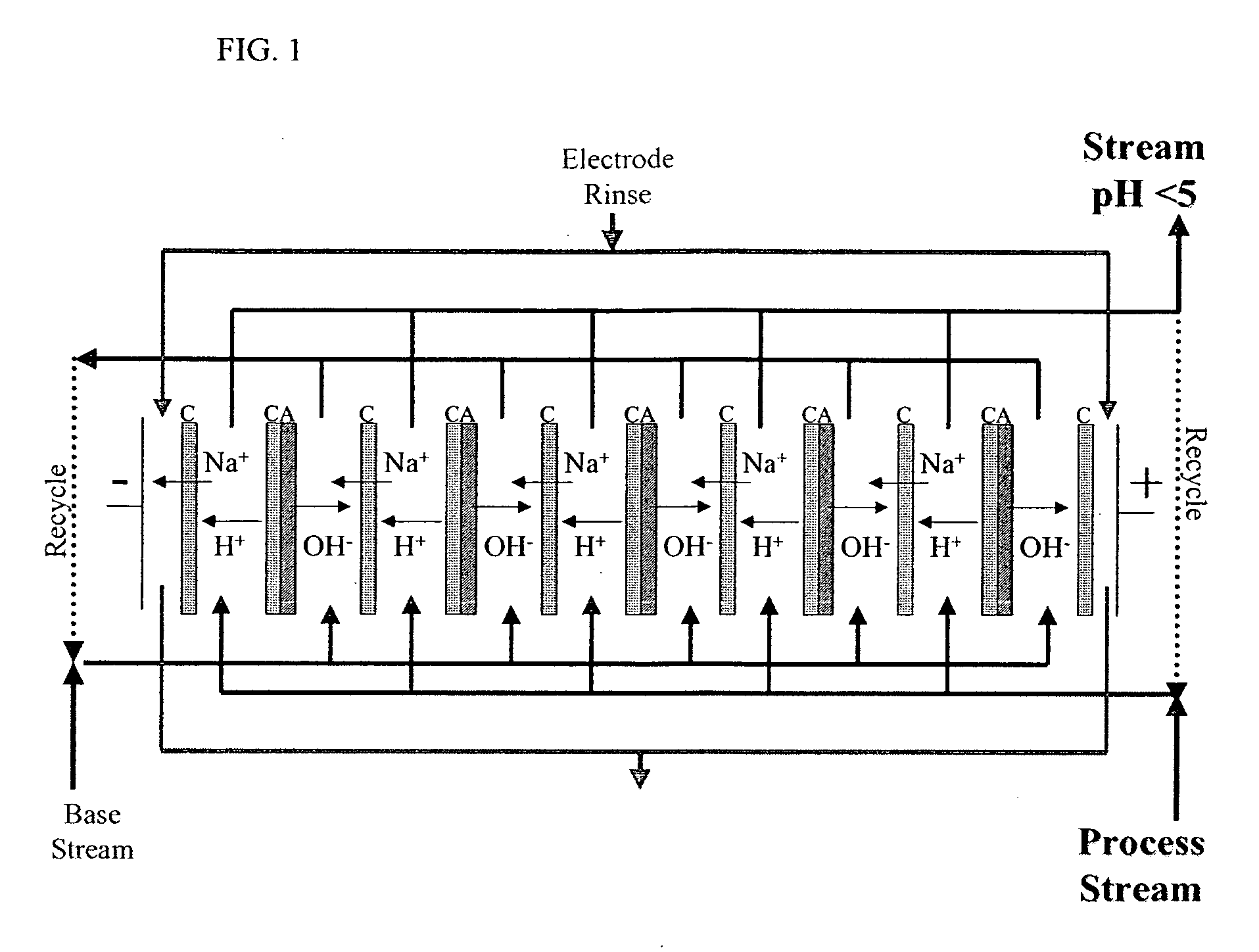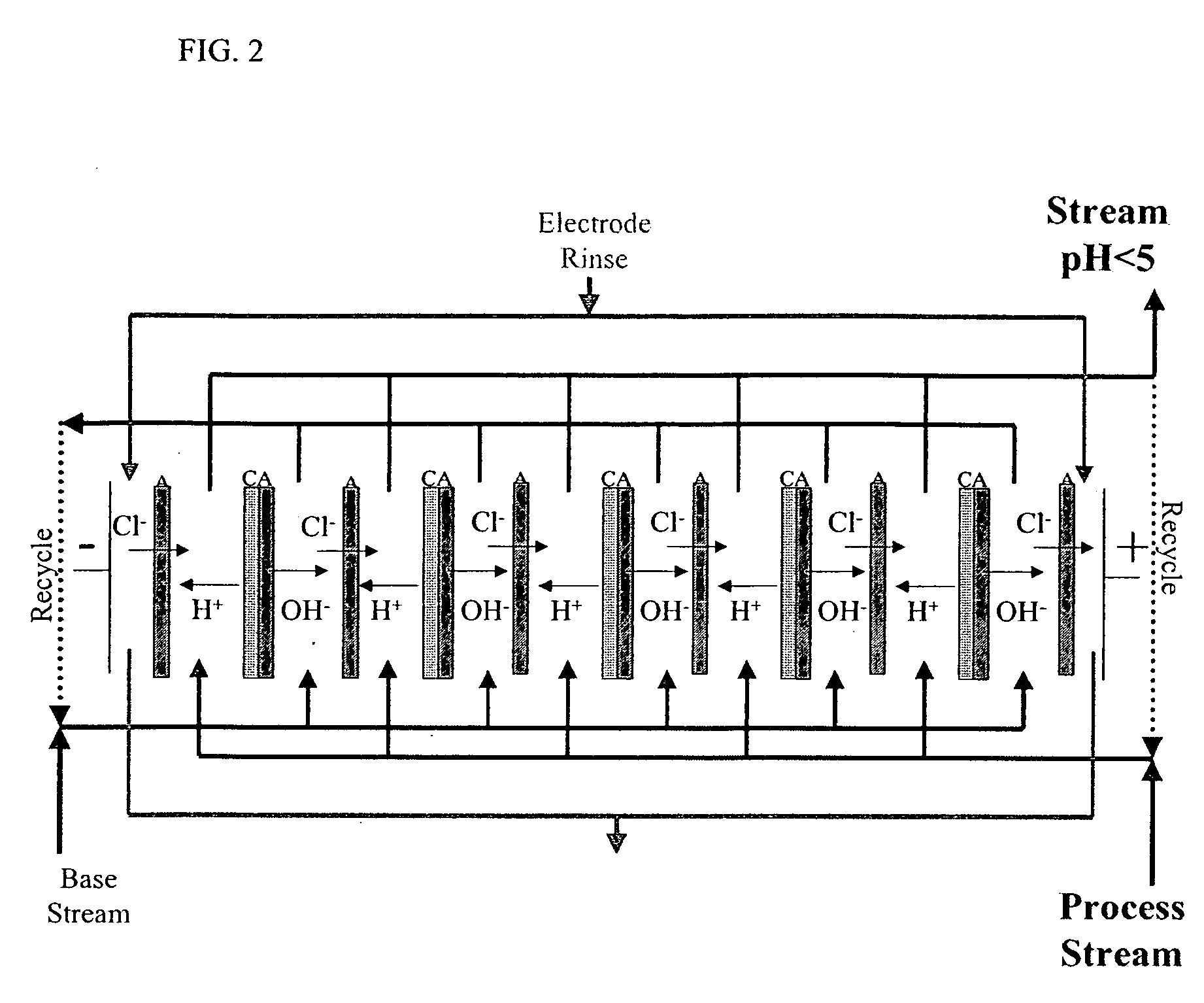Shelf-stable acidified food compositions and methods for their preparation
a food composition and shelf-stable technology, applied in the field of shelf-stable acidified food compositions and methods for their preparation, can solve the problems of reducing the desirable sensory attributes, affecting the organoleptic properties of food compositions, and significant (often negative) taste changes in such acidified foods, so as to improve the shelf-stable effect, reduce the ph of food compositions, and not introduce a sour taste or adversely affect the organoleptic properties
- Summary
- Abstract
- Description
- Claims
- Application Information
AI Technical Summary
Benefits of technology
Problems solved by technology
Method used
Image
Examples
example 1
Highly Acidic Egg White Protein as Acidulant
[0066] An aqueous mixture comprising 200 g of pasteurized, dry egg white (National Egg Products Co., Social Circle, Ga.), 340 g of de-ionized water and 34.5 g of 6.25 N food grade hydrochloric acid was homogenized in a Champ HP3 high performance blender (Springfield, Mo.) and then freeze dried to form a highly acidic egg white powder (aEWP). The aEWP powder had an acidifying power of 0.46 mole / liter per gram at pH 4.0.
[0067] A mayonnaise dressing was prepared using the aEWP powder as major acidifying agent to replace vinegar in the dressing according to the following recipe. Aqueous phase of the dressing is prepared by mixing water, egg yolk, sugar, and salt in a lab mixer. Oil was added slowly to the aqueous phase with mixing / shearing. For the control sample and vinegar were added at the end. For the aEWP containing sample, aEWP was first dissolved in about half amount of water from the formula. The resulting paste was used to replace v...
example 2
Process Using Bipolar Membrane Electrodialysis to Generate Acidic Water
[0069] An acidic aqueous ED composition was prepared by using ED equipped with a cation monopolar-anion monopolar-bipolar-cation monopolar membrane configuration such as described above for FIG. 3. A bipolar membrane was placed in between a plurality of cationic membranes and / or a plurality of anionic membranes. A salt solution (about 12.5% NaCl) was used between the cation monopolar membrane and the anion monopolar membrane separated from process stream (i.e. acidic and basic water streams) and was partially demineralized after the ED treatment. Eight litters of softened municipal water for the acid feed water stream and eight liters distilled water for the basic feed water stream were processed using an electrical potential less than 5 V / cell with 800 A / m2 current for about 60 minutes until a pH below 1.0 was achieved for the acidic water stream. Ion profiles of the feed aqueous solution (pre-ED water) and the...
example 3
Highly Acidic Soy Flour as Acidulant
[0071] An aqueous mixture comprising 200 g of defatted soy flour (Archer-Daniels-Midland Co., Decatur, Ill.), 800 g of de-ionized water and 37.6 g of 6.25N food grade hydrochloric acid was homogenized in a Champ HP3 high performance blender (Springfield, Mo.) then freeze dried to form a highly acidic defatted soy flour (aDSF) powder. The aDSF powder had an acidifying power of 0.29 mole / liter per gram at pH 4.0.
[0072] A shelf stable dip was prepared using the DSF powder as major acidifying agent according to the recipe described in Table 3 below. An ED composition obtained in a manner as described in Example 2 above was also used as a secondary acidifying agent in order to achieve a final target pH of 4.2 or less. The addition amount of the ED composition used was 13.1%. The dip was prepared by first mixing water, corn syrup solid, dairy protein, starch and aDSF at about 140° F. followed by addition of pre-melted oil and emulsifier to form a wet ...
PUM
 Login to View More
Login to View More Abstract
Description
Claims
Application Information
 Login to View More
Login to View More - R&D
- Intellectual Property
- Life Sciences
- Materials
- Tech Scout
- Unparalleled Data Quality
- Higher Quality Content
- 60% Fewer Hallucinations
Browse by: Latest US Patents, China's latest patents, Technical Efficacy Thesaurus, Application Domain, Technology Topic, Popular Technical Reports.
© 2025 PatSnap. All rights reserved.Legal|Privacy policy|Modern Slavery Act Transparency Statement|Sitemap|About US| Contact US: help@patsnap.com



